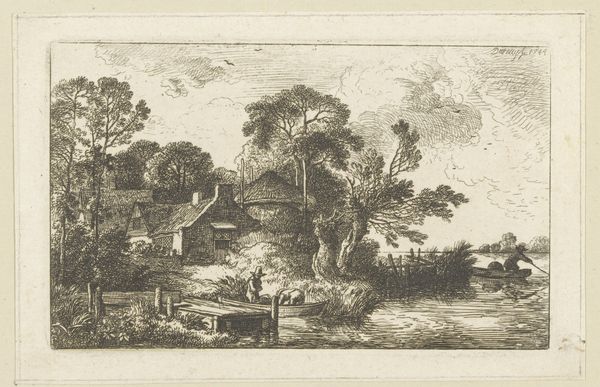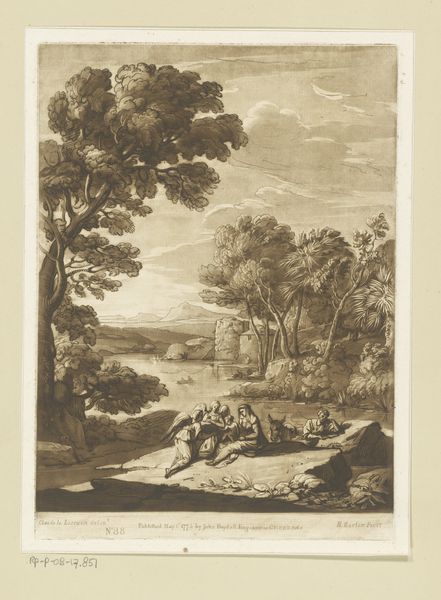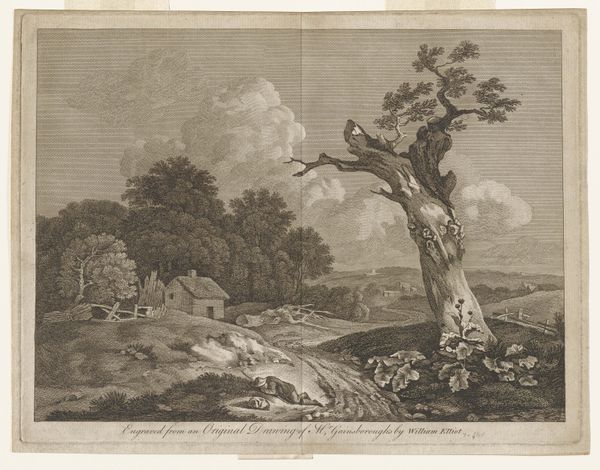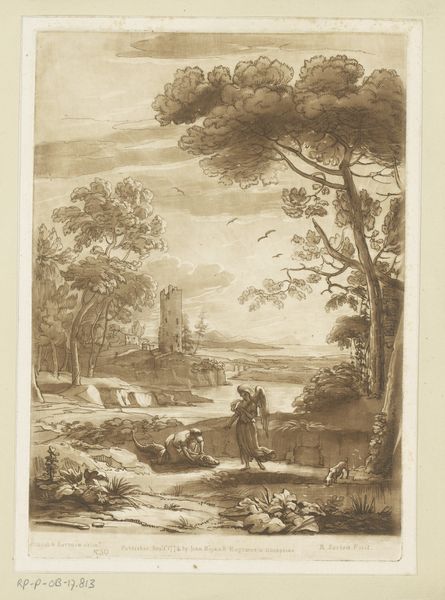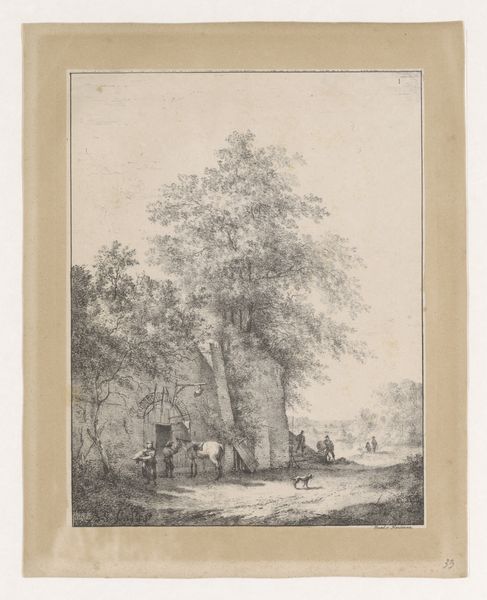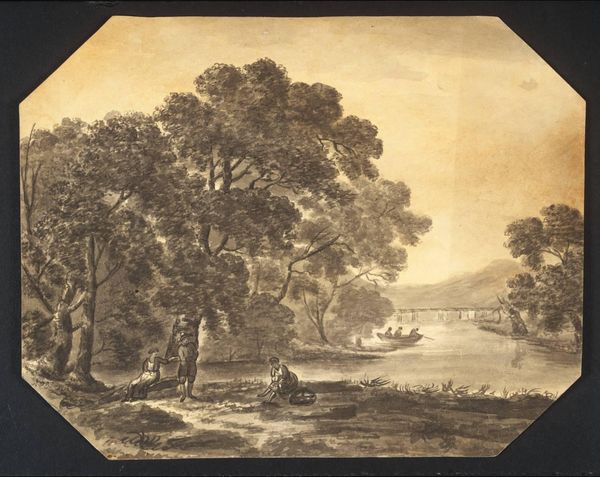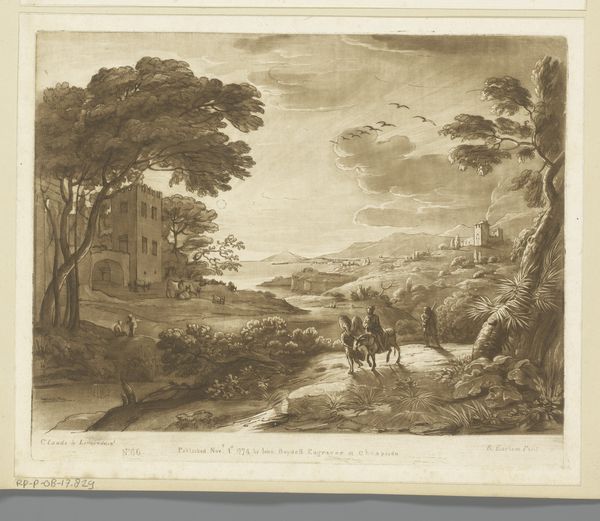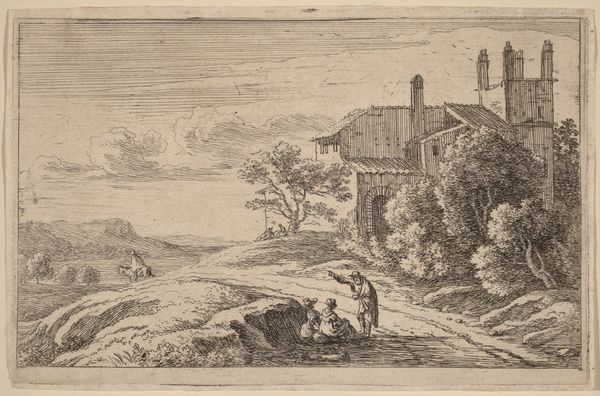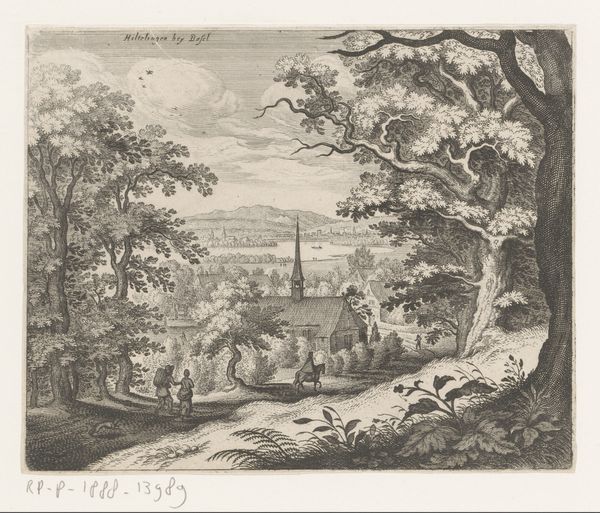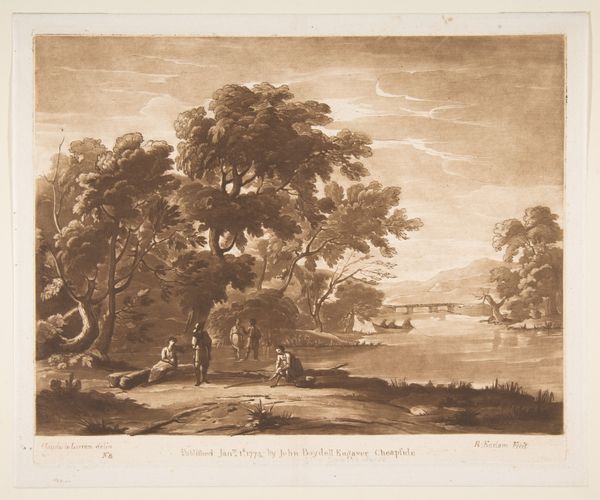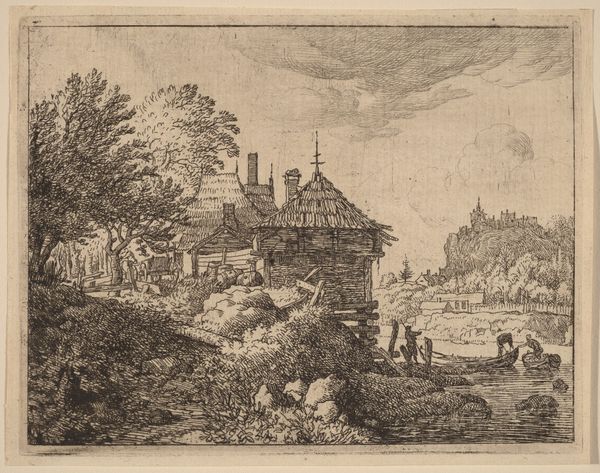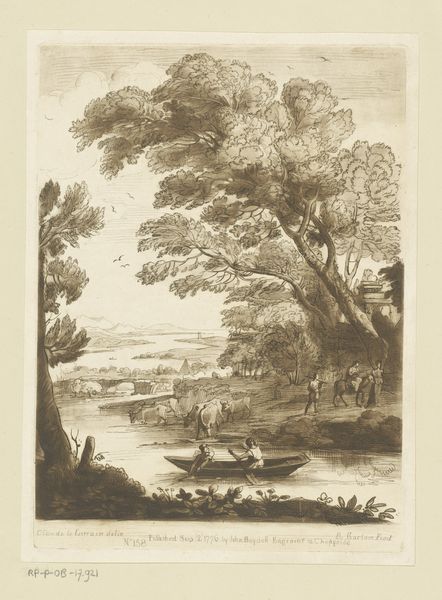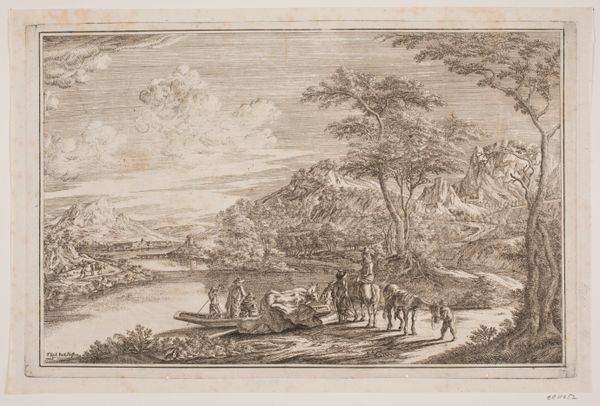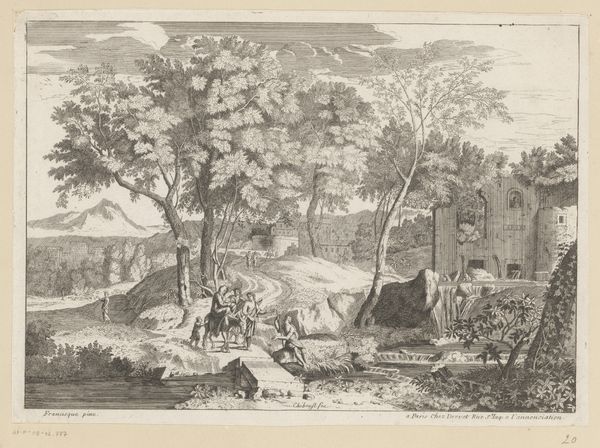
print, engraving
#
baroque
# print
#
landscape
#
engraving
Dimensions: 245 mm (height) x 187 mm (width) (plademaal)
Curator: Before us we have "Flodparti", created in 1746 by Johanna Fosie. This work, an engraving, invites us into a serene waterside setting. What are your first thoughts on this particular baroque landscape? Editor: Initially, I’m drawn to the almost dreamlike quality rendered by the medium itself; the meticulous lines create this soft hazy atmosphere. There’s something calming in the careful layering of the engraved lines forming such detailed areas. Curator: Indeed. And if we consider the historical context, prints like these offered a form of accessibility. Fosie, a woman artist working in the 18th century, challenges norms by portraying her immediate landscape in Denmark, making commentary through observation on the life around her. Editor: That attention to observation and line creates visual delight. Notice how she balances textures—the smoothness of the water against the roughness of the aged tree. What narrative could that be suggesting from the viewpoint of formal composition? Curator: We can argue that it touches on themes of transformation and the cyclical nature of existence and change, even female empowerment, reflecting the ebb and flow of power dynamics within her historical surroundings. It’s a silent form of resistance and expression for a woman who was likely excluded from other creative arenas. The presence of travelers alongside watercraft in the scene implies a silent yet moving narrative, perhaps challenging static societal expectations. Editor: Fascinating, but I feel we must consider Fosie's application of texture as just her choice for surface play. It seems a dialogue between control and natural wildness of a certain part of nature. It would take away from Fosie’s control by focusing on any possible intention outside of surface contrast. Curator: Maybe, but artists often imbue their surroundings with social context, whether conscious or not. By focusing on a "flooded landscape" – the artist is surely implying more. In what condition are her people and their habitat? That condition reflects directly on 18th-century socioeconomic conditions! Editor: Perhaps we should meet somewhere in the middle. Perhaps her technique and precision allowed her freedom from direct observation. Curator: Maybe, but I think that examining "Flodparti" through a contextual lens opens us to new understanding and appreciation. It acknowledges the barriers Fosie faced and perhaps how she quietly navigated around them. Editor: Ultimately, what’s captured in the moment is an almost hyper-focused dedication to technique to show the formal and aesthetic components of landscape.
Comments
No comments
Be the first to comment and join the conversation on the ultimate creative platform.
